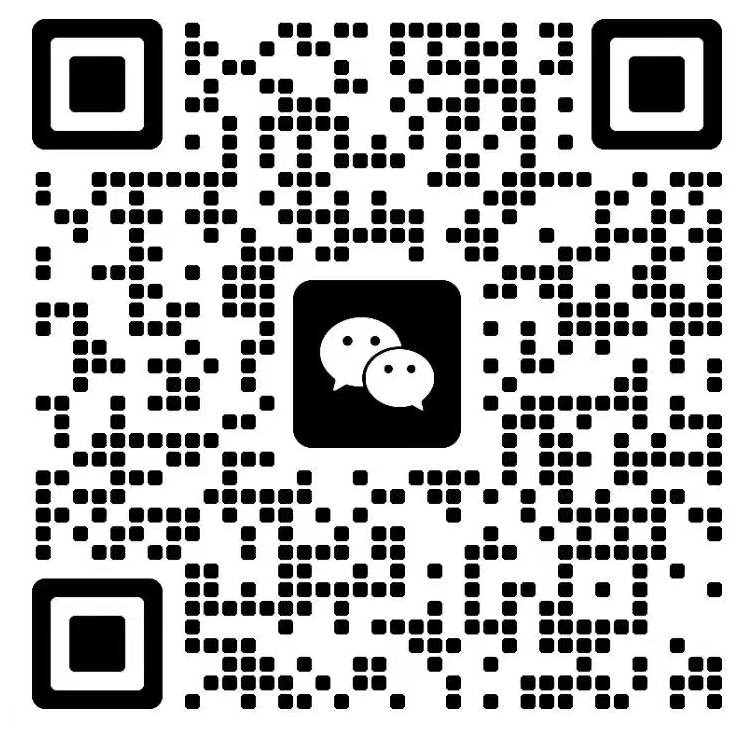一、考查目標(biāo)
攻讀外國語言學(xué)及應(yīng)用語言學(xué)專業(yè)學(xué)位入學(xué)考試綜合英語(II)科目考試內(nèi)容包括英語課程與教學(xué)論、語言學(xué)導(dǎo)論兩門專業(yè)課程,要求考生系統(tǒng)掌握相關(guān)學(xué)科的基本知識、基礎(chǔ)理論和基本方法,并能運(yùn)用相關(guān)理論和方法分析、解決實(shí)際問題。
二、考試形式與試卷結(jié)構(gòu)
(一)試卷成績及考試時間
本試卷滿分為150分,考試時間為180分鐘。
(二)答題方式
答題方式為閉卷、筆試。
(三)試卷內(nèi)容結(jié)構(gòu)
各部分內(nèi)容所占分值為:
1.《英語課程與教學(xué)論》占比總分的50%左右;
2.《語言學(xué)導(dǎo)論》占比總分的50%左右。
(四)試卷題型結(jié)構(gòu)
英語課程與教學(xué)論部分:名詞解釋題、簡答題、論述題等。
語言學(xué)導(dǎo)論部分:判斷題、單項(xiàng)選擇題、名詞解釋題、簡答題等。
三、考查范圍
英語課程與教學(xué)論
考查目標(biāo)
1.全面掌握英語教育領(lǐng)域的基本知識和基本理論,重點(diǎn)理解交際語言教學(xué)和任務(wù)型語言教學(xué)的意義。
2.熟練掌握英語語音、語法、詞匯、聽、說、讀、寫技能的教學(xué)方法,掌握教案設(shè)計(jì)的基本原則和撰寫教案的方法,掌握英語教學(xué)評價(jià)的方法和技巧。
3.正確理解課堂教學(xué)管理的含義,熟練掌握基本的課堂管理方法和技巧。
考查內(nèi)容
(注:以“*”表示命題熱度,分三個等級,“*”越多表示往年命題熱度越高)
Unit 1 Language and Language Learning
1.2 Views on language*
1.3 Views on language learning and learning in general**
Unit 2 Communicative Principles and Task-based Language Teaching
2.1 Language use in real life vs. traditional pedagogy
2.2 What is communicative competence?**
2.3 Implications for teaching and learning
2.4 Principles of Communicative Language Teaching (CLT)***
2.5 CLT and the teaching of language skills
2.6 Main features of communicative activities*
2.7 Task-based Language Teaching (TBLT)**
2.8 PPP and Task-based Language Teaching***
2.9 How to design tasks?
2.10 Appropriateness of CLT and TBLT in the Chinese context
Unit 4 Lesson Planning
4.1 Why is lesson planning important?
4.2 Principles for good lesson planning**
4.3 Macro planning vs.micro planning
4.4 Components of a lesson plan*
Unit 5 Classroom Management
5.1 The role of the teacher**
5.2 Classroom instructions*
5.3 Student grouping**
5.4 Discipline in the language classroom*
5.5 Questioning in the classroom***
5.6 Dealing with errors**
Unit 6 Teaching Pronunciation
6.1 The role of pronunciation*
6.2 The goal of teaching pronunciation**
6.3 Aspects of pronunciation
6.4 Practising sounds***
6.5 Practising stress and intonation**
Unit 7 Teaching Grammar
7.1 The role of grammar in language learning*
7.2 Grammar presentation***
7.3 Grammar practice**
Unit 8 Teaching Vocabulary
8.1 Understanding vocabulary and vocabulary learning
8.2 What does knowing a word involve?**
8.3 Ways of presenting vocabulary**
8.4 Ways of consolidating vocabulary*
8.5 Developing vocabulary learning strategies***
Unit 9 Teaching listening
9.1 Why does listening seem so difficult?**
9.3 Characteristics of the listening process*
9.4 Principles and models for teaching listening***
9.5 Pre-listening activities*
9.6 While-listening activities*
9.7 Post-listening activities*
Unit 10 Teaching Speaking
10.1 Differences between spoken and written language*
10.2 Principles for teaching speaking***
10.3 Designing speaking tasks**
10.4 Types of speaking tasks*
10.5 Organising speaking tasks
Unit 11 Teaching Reading
11.4 Strategies involved in reading comprehension*
11.5 The role of vocabulary in reading*
11.6 Principles and models for teaching reading***
11.7 Pre-reading activities*
11.8 While-reading activities**
11.9 Post-reading activities*
Unit 12 Teaching Writing
12.2 A communicative approach to writing**
12.3 Problems in writing tasks
12.4 A process approach to writing***
12.5 Motivating students to write**
12.6 Designing writing tasks
12.7 Using the Internet to promote process writing*
Unit 13 Integrated Skills
13.1 Why should we integrate the four skills?*
13.2 How can we integrate the four skills?*
13.3 What are the implications for teaching?
13.4 What are the limitations of integrating the four skills?
Unit 14 Moral Learning
14.1 Moral learning and English
14.2 Activities for moral learning*
14.3 The roles of the teacher*
14.4 The roles of the school
Unit 15 Assessment in Language Teaching
15.1 Understanding assessment*
15.2 Assessment purposes*
15.3 Methods for assessment**
15.4 Criteria for assessment***
15.5 Assessment principles*
15.6 Tests in assessment*
Unit 16 Learner Differences and Learner Training
16.1 Understanding learner differences*
16.2 Learner training in language teaching*
Unit 17 Using and Creating Resources
17.1 What resources are available for teaching?*
17.2 Exploring hidden resources*
Unit 18 Evaluating and Adapting Textbooks
18.3 Evaluating textbooks*
18.4 Selecting textbooks
18.5 Adapting textbooks
語言學(xué)導(dǎo)論
考查目標(biāo)
1. 系統(tǒng)掌握語言學(xué)的基礎(chǔ)知識、基本理論和語言學(xué)研究的基本方法。
2. 能初步運(yùn)用語言學(xué)的基礎(chǔ)知識、基本理論和基本方法分析和判斷與語言相關(guān)的理論問題和實(shí)際問題。
考查內(nèi)容
(注:以“*”表示命題熱度,分三個等級,“*”越多表示往年命題熱度越高)
Chapter 1 Invitations to Linguistics
1.1 Why Study Language?
1.2 What Is Language? ***
1.3 Design Features of Language***
1.3.1 Arbitrariness
1.3.2 Duality
1.3.3 Creativity
1.3.4 Displacement
1.4 Origin of Language
1.5 Functions of Language*
1.5.1 Informative
1.5.2 Interpersonal Function
1.5.3 Performative Function
1.5.4 Emotive Function
1.5.5 Phatic Communion
1.5.6 Recreational Function
1.5.7 Metalingual Function
1.6 What Is Linguistics?
1.7 Main Branches of Linguistics**
1.7.1 Phonetics
1.7.2 Phonology .
1.7. 3 Morphology
1.7.4 Syntax
1.7.5 Semantics
1. 7.6 Pragmatics
1.8 Macrolinguistics
1.8.3 Anthropological Linguistics
1.8.4 Computational Linguistics
1.9 Important Distinctions in Linguistics ***
1.9.1 Descriptive vs. Prescriptive
1.9.2 Synchronic vs. Diachronic
1.9.3 Langue and Parole
1.9.4 Competence and Performance
Chapter 2 Speech Sounds
2.1 Speech Production and Phonetic Transcription
2.1.1 Speech Production *
2.1.2 Phonetic Transcription - The IPA
2.2 Consonants and Vowels***
2.2.1 Consonants
2.2.2 Vowels
2.2.3 The Sounds of English***
2.3 Phonological Analysis***
2.3.1 Phonemes
2.3.2 Allophone
2.3.3 Phonological Rules
2.3.4 Rule Ordering
2.4 Suprasegmentals
2.4.1 Syllable**
2.4.2 Sonority Scale
2.4.3 Stress
2.4.4 Intonation and Tone
Chapter 3 Words and Morphology***
3.1 The Nature of Words
3.1.1 What is a Word?
3.1.2 Content Words and Function Words
3.2 Types of Morphemes
3.3 Morphological Processes
3.3.1 Derivation
3.3.2 Compounding
3.3.3 Inflection
3.3.4 Minor Morphological Processes
Chapter 4 From Word to Text
4.1 Syntactic Relations*
4.1.1 Positional Relation
4.1.2 Relation of Substitutability
4.1.3 Relation of Co-occurrence
4.2 Grammatical Construction and Its Constituents**
4.2.1 Grammatical Construction
4.2.2 Immediate Constituents
4.2.3 Endocentric and Exocentric Constructions
4.2.4 Coordination and Subordination
4.3 Syntactic Function*
4.3.1 Subject
4.3.2 Predicate
4.3.3 Object
4.3.4 The Relation between Classes and Functions
4.4 Category**
4.4.1 Number
4.4.2 Gender
4.4.3 Case
4.4.4 Agreement
4.5 Phrase, Clause and Sentence
4.5.1 Phrase
4.5.2 Clause
4.5.3 Sentence
4.6 Recursiveness
4.6.1 Conjoining
4.6.2 Embedding
4.7 Beyond the Sentence
4.7.1 Sentential Connection
4.7.2 Cohesion
4.7.3 Coherence
Chapter 5 Meaning
5.1 Meanings of “MEANING"
5.2 The Referential Theory*
5.3 Sense Relations***
5.3.1 Synonymy
5.3.2 Antonymy
5.3.3 Hyponymy
5.4 Componential Analysis*
Chapter 8 Language in Use
8.1 Speech Act Theory
8.1.1 Perfomatives and Constatives
8.1.2 The Theory of the Illocutionary Act **
8.2 The Theory of Conversational Implicature***
8.2.1 The Cooperative Principle
8.2.2 Violation of the Maxims
8.2.3 Characteristics of Implicature

原文標(biāo)題:2023年渤海大學(xué)碩士研究生招生擬招生專業(yè)信息(持續(xù)更新)
原文鏈接:https://yjszsxxw.bhu.edu.cn/engine2/general/4154015/detail?engineInstanceId=656393&typeId=2984613&pageId=85721&websiteId=63018¤tBranch=0
以上就是小編整理“2023考研大綱:渤海大學(xué)843綜合英語(II)2023年碩士研究生入學(xué)考試自命題科目考試大綱”的全部內(nèi)容,想了解更多考研復(fù)試大綱信息,請持續(xù)關(guān)注本網(wǎng)站!




